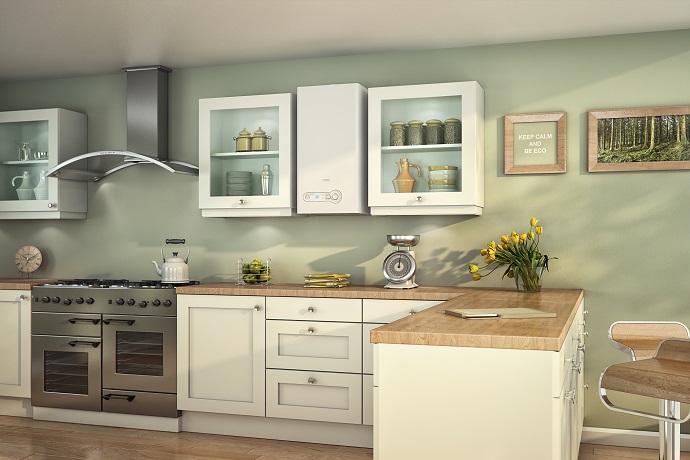
Home-owners are increasingly looking for better ways to heat their homes and, with convenience being a priority, the system also has to work for them in the most efficient way possible. One way of ensuring the heating is in sync with the home-owner is turning it up and down or off in unoccupied areas. An obvious example is varying the room temperatures in downstairs rooms compared to the bedrooms during the daytime. To achieve this balance a zoned controlled heating system is a viable option.
Originally, zoning was interpreted as the separation of hot water and heating circuits – one temperature control for domestic hot water and one for space heating. However, the maturing heating market and customer base has started to look for something more, in particular zoning or separate control of areas within the space heating system itself. Initially, this was the creation of a separate ground floor and first floor area in two storey buildings or the dividing of a property into living and sleeping areas. It was also included in some energy efficiency legislation in the UK and Republic of Ireland.
By using zone valves and separating supply circuits, heating schedules and differing temperatures could be achieved with time clocks and thermostats. It is not an easy or
cheap option as duplication of pipework is expensive and time consuming, particularly in properties with two storeys and a solid ground floor. The lowest radiators in such a property would be supplied with pipework from above, which would mean two circuits run beneath the floorboards as opposed to one if zoning was not required.
When zoning was first introduced, an additional difficulty was the extra wiring and the lack of availability of a master three channel (one hot water and two heating) programmer. This situation has now changed, as master heating programmers are now readily available and the problem of extra wiring has been overcome by the availability of wireless room thermostats.
Having two or more heating zones is now made even easier with the advent of programmable radiator thermostats. These were available 15 years ago but were local control only, i.e. each radiator fitted with a programmable thermostatic radiator valve would have to be programmed individually and they were not interlocked or connected back to the boiler, they simply offered time and temperature control to the room in which they were located. The latest battery powered versions can be linked by radio signal to a master controller that can be used to programme individual radiator, zone or room schedules and temperatures from one central point (as well as at each zone individually).
The additional benefit is that the master controller is interlocked to the boiler via a relay, thereby turning the burner off when demand ceases. What is more, some master controllers can be configured to communicate with a compatible boiler directly. This involves not simply turning the boiler ON or OFF but directly adjusting its flow temperature by aggregating the demand from each zone or sensor and running at as low a flow and return temperature as necessary while maintaining comfort levels for the user. This offers an improvement in operation as condensing boilers operate more efficiently the cooler they run so a control system that can directly affect the boiler flow temperature should be an improvement to its operating efficiency.
The above is related to heating by radiators, but zoning has always been possible and desirable with the increasingly popular underfloor heating systems. The multi-zone master heating controllers can also be used to regulate such systems by means of remote wireless room thermostats acting on valves at the underfloor heating manifold.
T: (NI) 00353 5677 55055 or (RoI) 05 677 55055 – E: sales@vokera.co.uk
W: www.vokera.ie











